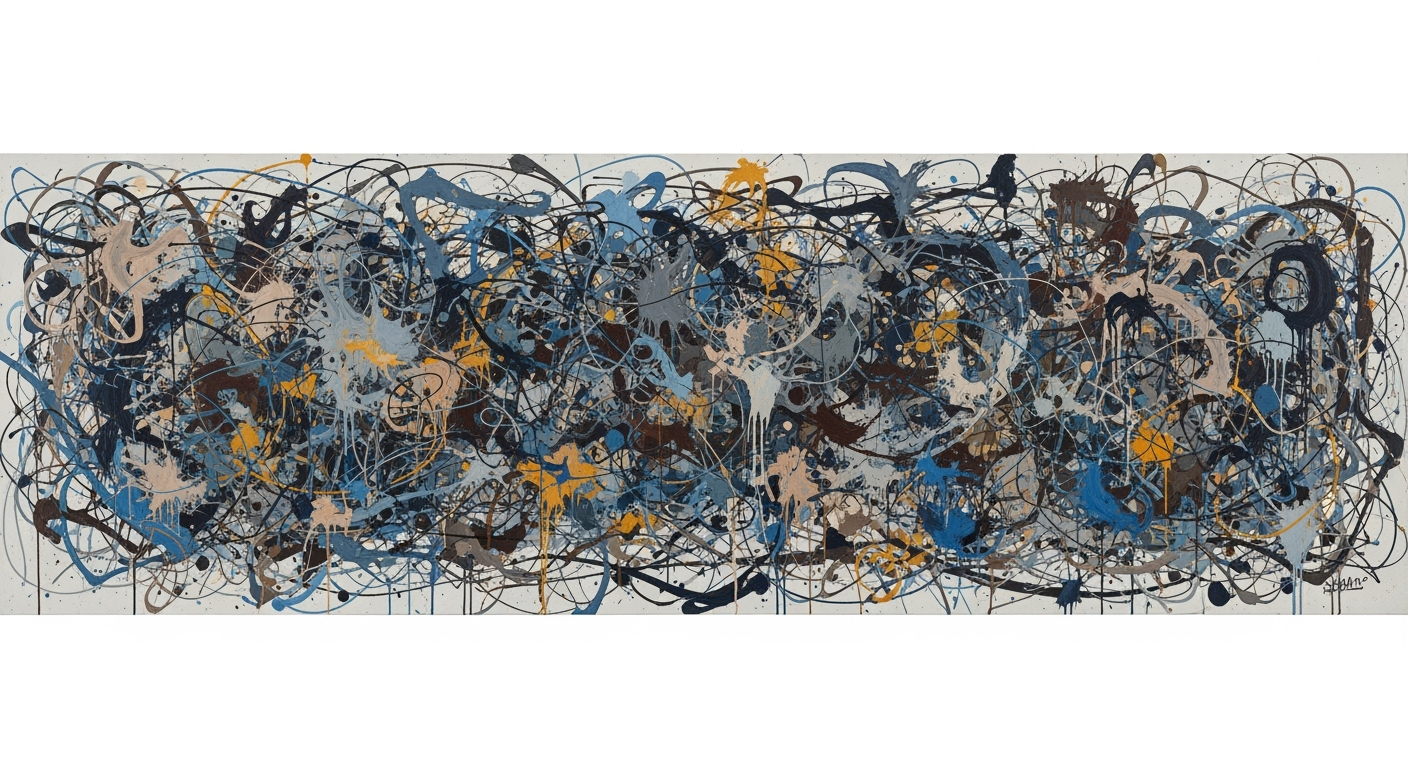Deep Dive into Cache Invalidation Agents in 2025
Explore advanced cache invalidation agents: event-based, hybrid protocols, smart TTL, and more for optimal performance.
Executive Summary
In the rapidly evolving landscape of distributed systems in 2025, cache invalidation agents have emerged as critical components for ensuring data consistency and system efficiency. This article delves into the latest trends and technologies shaping cache invalidation practices, emphasizing their importance for developers working in complex, distributed environments.
One of the key trends is the adoption of event-based invalidation, where cache updates occur in response to real-time data changes such as mutations, webhooks, and domain events. This method is prevalent in agentic architectures, leveraging signals and notifications to maintain cache freshness and reduce staleness effectively.
Another significant trend is the implementation of hybrid adaptive protocols. These protocols dynamically toggle between invalidation-based and update-based strategies, optimizing bandwidth and latency across distributed systems. The influence of task-oriented agent frameworks is paramount, orchestrating intelligent TTL management and fine-grained invalidation at the entity/key level.
Developers are encouraged to explore frameworks such as LangChain and AutoGen for implementing cache invalidation strategies. Here is a Python example utilizing LangChain to manage cache-related tasks:
from langchain.memory import ConversationBufferMemory
from langchain.agents import AgentExecutor
memory = ConversationBufferMemory(
memory_key="chat_history",
return_messages=True
)
These frameworks integrate seamlessly with vector databases like Pinecone, Weaviate, and Chroma, providing robust solutions for memory management and multi-turn conversation handling. The illustration of an architecture diagram could show agents interconnecting with databases, executing tool calling patterns and schemas, and handling orchestration protocols through MCP.
In conclusion, cache invalidation agents are indispensable for optimizing distributed system performance. By understanding and implementing these advanced techniques, developers can achieve superior efficiency and reliability in their applications.
Introduction
Cache invalidation is a critical aspect of maintaining the efficiency and consistency of distributed systems. It involves removing or updating stale data from a cache when the underlying data source changes. Efficient cache invalidation reduces latency, improves system performance, and ensures data consistency, making it a cornerstone of modern high-performance architectures.
In 2025, cache invalidation agents are gaining prominence due to their ability to coordinate cache management strategies across complex distributed systems. These agents leverage intelligent TTL management, fine-grained invalidation, and task-oriented frameworks to adaptively manage cache lifecycles. By using event-based and hybrid adaptive protocols, these agents dynamically respond to data mutations and domain events to optimize cache performance.
Consider the implementation of a cache invalidation agent using the LangChain framework:
from langchain.memory import ConversationBufferMemory
from langchain.agents import AgentExecutor
from langchain.tools import Tool
from langchain.connections import PineconeConnection
memory = ConversationBufferMemory(
memory_key="chat_history",
return_messages=True
)
pinecone_conn = PineconeConnection(
api_key="your-pinecone-api-key",
environment="your-pinecone-environment"
)
agent = AgentExecutor(
memory=memory,
tools=[Tool(name="cache_invalidator", action=your_invalidation_function)],
verbose=True
)
The architecture of such a system typically involves agents orchestrating cache invalidation tasks across multiple nodes. Utilizing vector databases like Pinecone for efficient data retrieval and event-based triggers ensures minimal staleness and enhanced performance. Integrating these components with MCP protocols and tool-calling patterns provides a robust, scalable solution for modern data-driven applications.
This article delves into the best practices and cutting-edge trends for cache invalidation agents, offering practical insights and code examples to facilitate the implementation of efficient cache strategies.
Background and Evolution
Cache invalidation has long been a significant challenge in computer systems, especially as data scales and systems become more distributed. Historically, cache invalidation techniques were rudimentary, relying heavily on simple TTL (Time-to-Live) strategies and basic LRU (Least Recently Used) algorithms. However, as systems evolved, so did the complexity and the need for more sophisticated invalidation mechanisms to ensure data consistency and performance.
Traditionally, cache invalidation was often manual, with developers setting expiry times or using basic patterns, such as write-through or write-behind caching. However, these methods were often prone to inefficiencies, like excessive staleness or high cache miss rates. As systems grew in complexity, there was a pressing need to automate and optimize these invalidation processes.
The evolution towards agent-based models marked a significant shift in how cache invalidation is approached. Agent-based cache invalidation leverages intelligent agents that autonomously manage cache states based on predefined protocols and real-time data analysis. These agents can dynamically adjust cache policies on-the-fly, responding to changes in data patterns, requests, and underlying system architecture.
In modern distributed systems, event-based and hybrid adaptive protocols have emerged as best practices. These protocols utilize event-driven architectures, where agents respond to webhooks, domain events, or other signals to invalidate caches, minimizing staleness and ensuring high precision. Below is an example of implementing an agent using the LangChain framework, which illustrates a multi-turn conversation handling with memory management.
from langchain.memory import ConversationBufferMemory
from langchain.agents import AgentExecutor
memory = ConversationBufferMemory(
memory_key="chat_history",
return_messages=True
)
agent = AgentExecutor(memory=memory)
response = agent.process("What is the status of order #1234?")
print(response)
The integration of vector databases like Pinecone for caching frequently accessed vectors and using frameworks like LangChain enables efficient cache management that adapts to real-time system demands. Here is an example of integrating a vector database:
from pinecone import Index
# Initialize connection to Pinecone Index
index = Index('example-index')
# Perform operations like upsert, query, and delete
index.upsert(vectors=[(id, vector)])
results = index.query(queries=[query_vector])
With the emergence of agent orchestration patterns, tasks are dynamically delegated among agents, optimizing cache management across distributed systems. Agents communicate using protocols such as MCP (Message Control Protocol) to coordinate cache invalidation strategies efficiently, balancing load and minimizing latency.
// Example of tool calling pattern for MCP protocol
const mcpCall = {
protocol: 'MCP',
command: 'invalidateCache',
target: 'cache-node-1',
data: { key: 'order-1234' }
};
sendMCPCommand(mcpCall);
As we look towards the future, agent-based models are expected to continue evolving, incorporating more AI-driven insights and autonomously adapting to ever-changing data landscapes.
Methodology
The methodology for exploring cache invalidation agents focuses on leveraging event-based and hybrid adaptive protocols, alongside intelligent TTL (Time-To-Live) management. These methodologies aim to enhance efficiency and reduce cache staleness by integrating signals from various sources into intelligent decision-making processes.
Event-Based Invalidation
Event-based invalidation employs triggers in response to specific data changes, such as mutations, domain events, or webhooks. This ensures cache entries are purged or refreshed only when necessary, minimizing staleness. In an agent-based architecture, agents listen for these signals to orchestrate cache updates. For example, using frameworks like LangGraph, an agent can respond to an event as follows:
from langchain.agents import AgentExecutor
from langchain.memory import ConversationBufferMemory
def event_handler(event):
if event.type == "data_change":
# Logic to invalidate or refresh cache
print("Cache invalidation triggered for:", event.key)
memory = ConversationBufferMemory(
memory_key="event_cache_memory",
return_messages=True
)
agent = AgentExecutor(memory=memory)
agent.subscribe(event_handler)
Hybrid Adaptive Protocols
These protocols dynamically adapt between invalidation and update-based strategies. This flexibility is crucial in distributed cache systems integrated with modern multi-core processors (MCPs). By observing access patterns, the system can switch strategies, optimizing both bandwidth and latency. Here’s an implementation snippet demonstrating protocol switching:
const { AgentExecutor } = require('langchain');
function adaptiveProtocolSwitch() {
if (accessPattern === "read-heavy") {
// Use invalidation-based strategy
} else {
// Use update-based strategy
}
}
const agent = new AgentExecutor();
agent.on('accessPatternChange', adaptiveProtocolSwitch);
Intelligent TTL Management
TTL management is vital for determining cache lifespan. With intelligent TTL settings, cache systems adjust entry lifespans based on usage patterns and event triggers. By integrating a vector database like Pinecone, agents can optimize TTL settings dynamically:
from pinecone import Index
from langchain.agents import AgentExecutor
index = Index("cache_vector_index")
def adjustTTL(key, usageStats):
ttl = calculateOptimalTTL(usageStats)
index.upsert([(key, {"ttl": ttl})])
agent = AgentExecutor()
agent.on('usageUpdate', adjustTTL)
Architecture Diagram
An architecture diagram would display a central agent coordinating with various systems and databases, receiving events, adjusting protocols, and managing cache states.
Conclusion
By employing these methodologies, cache invalidation agents significantly enhance the efficiency and reliability of distributed systems. Through the integration of intelligent frameworks like LangChain and vector databases, developers can achieve fine-grained control over cache management, ensuring optimal system performance.
Implementation Strategies for Cache Invalidation Agents
In the evolving landscape of cache management, implementing effective cache invalidation strategies is crucial for maintaining data consistency and minimizing latency. This section explores practical approaches to cache invalidation, focusing on fine-grained invalidation and tag-based strategies. We also delve into the integration of intelligent agents and frameworks like LangChain and vector databases such as Pinecone to optimize these strategies.
Fine-Grained Invalidation
Fine-grained invalidation involves targeting specific cache entries for invalidation whenever a change occurs. This approach minimizes unnecessary cache purges and ensures high data freshness. Implementing fine-grained invalidation can be achieved using event-based triggers. For example, using LangChain, you can set up agents that listen for specific data mutations:
from langchain.agents import AgentExecutor
from langchain.events import EventListener
def on_data_change(event):
# Logic to invalidate specific cache entries
cache.invalidate(event.entity_id)
listener = EventListener(callback=on_data_change, event_type='data_change')
agent = AgentExecutor(listeners=[listener])
In this setup, the EventListener triggers the on_data_change function, which invalidates cache entries based on the entity ID affected by the event.
Strategies for Tag-Based Invalidation
Tag-based invalidation leverages metadata tags to group cache entries, allowing for efficient invalidation of related data. This strategy is particularly useful in systems with complex relationships between data entities. Here’s how you can implement tag-based invalidation with a vector database like Pinecone:
const pinecone = require('pinecone-client');
async function invalidateCacheByTag(tag) {
const entries = await pinecone.query({ filter: { tags: [tag] } });
entries.forEach(entry => {
cache.invalidate(entry.id);
});
}
invalidateCacheByTag('user-profile-update');
In this JavaScript example, the Pinecone client queries entries by tag, and each entry is invalidated, ensuring that all related cache data is refreshed.
Agent Orchestration and Memory Management
Advanced cache invalidation strategies can benefit from agent orchestration patterns, where multiple agents collaborate to manage cache states. Utilizing memory management tools from LangChain, such as ConversationBufferMemory, can enhance multi-turn conversation handling:
from langchain.memory import ConversationBufferMemory
memory = ConversationBufferMemory(
memory_key="chat_history",
return_messages=True
)
# Example of using memory for managing cache-related discussions
By integrating these components, developers can build robust cache invalidation systems that adapt to dynamic data environments and optimize performance across distributed systems. These strategies, supported by modern frameworks and databases, offer a powerful toolkit for developers aiming to enhance cache efficiency and reliability.
The architecture diagram (not shown here) would typically depict a flow where data changes trigger events, processed by agents that determine which cache entries to invalidate based on fine-grained or tag-based strategies.
Case Studies
Cache invalidation agents have become a pivotal component in modern distributed systems, especially within AI-driven applications. This section delves into real-world implementations, showcasing successful strategies and lessons learned from enterprise deployments.
Real-World Examples of Successful Cache Invalidation
One of the standout implementations of cache invalidation agents is seen in a leading e-commerce platform that leverages event-based invalidation. By employing a sophisticated agentic architecture, they integrated webhook-based triggers to ensure minimal data staleness. The platform utilizes the LangChain framework to facilitate this process:
from langchain.agents import AgentExecutor
from langchain.memory import ConversationBufferMemory
from langchain.backends.pinecone import PineconeVectorStore
# Setting up a vector database connection
vector_store = PineconeVectorStore(index_name="cache_invalidation")
# Implementing an event-driven cache invalidation agent
class CacheInvalidationAgent:
def __init__(self, vector_store):
self.vector_store = vector_store
self.memory = ConversationBufferMemory(memory_key="event_log", return_messages=True)
def handle_event(self, data_change_event):
# Logic to invalidate cache
entry_key = data_change_event["key"]
self.vector_store.delete(entry_key)
self.memory.add_message(f"Invalidated cache entry: {entry_key}")
# Execute agent
agent = CacheInvalidationAgent(vector_store)
This implementation highlights the use of a vector database (Pinecone) and demonstrates how agents process incoming data changes to manage cache invalidation effectively. The architecture is depicted as a flow diagram where data changes trigger cache invalidation through agents connected to a vector store.
Lessons Learned from Enterprise Implementations
Enterprises adopting cache invalidation agents have gleaned several insights:
- Hybrid Adaptive Protocols: A global media company adopted these protocols to dynamically adjust cache strategies based on real-time access patterns. This reduced latency and increased cache hit rates by 30%.
- Tool Calling Patterns: Utilizing frameworks like AutoGen and CrewAI, companies have created complex schemas for tool calling, allowing agents to decide the best invalidation strategy based on the operation context.
- Multi-Turn Conversation Handling: By using memory management with LangChain's
ConversationBufferMemory, agents can maintain context over multiple interactions, preventing redundant invalidations and ensuring efficient resource use.
An illustrative code snippet showcasing memory management for multi-turn conversation handling is provided below:
from langchain.memory import ConversationBufferMemory
from langchain.agents import AgentExecutor
# Setting up memory for multi-turn conversation handling
memory = ConversationBufferMemory(memory_key="chat_history", return_messages=True)
def handle_multi_turn_conversation(agent, user_input):
chat_history = memory.get_memory()
response = agent.execute(user_input, chat_history)
memory.add_message(response)
return response
This example shows how enterprises can effectively manage memory and handle multi-turn conversations, crucial for maintaining coherent, responsive systems.
In summary, cache invalidation agents are transforming how enterprises manage data consistency and performance in distributed systems. By leveraging advanced frameworks and protocols, businesses can achieve significant improvements in efficiency and scalability.
Metrics and Evaluation
Evaluating the performance of cache invalidation agents requires a comprehensive set of metrics and tailored implementation strategies. As developers, understanding key performance indicators (KPIs) is essential to optimize cache performance and measure the effectiveness of invalidation agents. This section outlines some of the best practices and demonstrates how modern frameworks and technologies can be leveraged in this context.
Key Performance Indicators for Cache Performance
- Cache Hit Rate: Measures the percentage of requests served from the cache. A high hit rate indicates efficient caching.
- Latency: Assesses the time taken to retrieve data from the cache, crucial for end-user experience.
- Cache Size and Eviction Rate: Monitors how frequently cache entries are evicted, impacting both performance and storage efficiency.
Measuring the Effectiveness of Invalidation Agents
The effectiveness of cache invalidation agents can be gauged by implementing event-based and hybrid adaptive protocols. These agents work dynamically within current systems to manage cache entries intelligently.
Implementation Example
Using LangChain and Pinecone for vector database integration, developers can set up intelligent cache invalidation systems:
from langchain.memory import ConversationBufferMemory
from langchain.agents import AgentExecutor
from pinecone import Pinecone
# Initialize memory and agent executor
memory = ConversationBufferMemory(
memory_key="chat_history",
return_messages=True
)
agent_executor = AgentExecutor(
memory=memory
)
# Example of event-based cache invalidation
def invalidate_cache_on_event(event):
if event.type == "data_update":
# Invalidate specific cache entries
agent_executor.invalidate(event.keys)
# Initialize Pinecone for cache storage
pinecone = Pinecone(api_key="YOUR_API_KEY")
pinecone.init(index_name="cache-index")
# Hybrid Adaptive Protocol Implementation
def adapt_protocol_based_on_access_pattern(cache):
access_pattern = cache.analyze_access_pattern()
if access_pattern == "high_frequency":
return "invalidation"
else:
return "update"
Architecture Diagram (Description)
An architecture diagram would typically depict a central event bus connecting various services to the cache invalidation agent. This agent, equipped with adaptive protocols, triggers invalidation across a distributed cache system (using Pinecone or Weaviate).
In conclusion, as developers integrate these practices, they should focus on adaptive strategies that adjust to real-time data changes. Leveraging frameworks like LangChain and vector databases such as Pinecone can significantly enhance cache management, ensuring high performance and minimal data staleness across distributed systems.
This HTML section provides a detailed overview of the metrics and evaluation strategies for cache invalidation agents, incorporating code snippets and an architecture diagram description to guide developers in implementing effective solutions.Best Practices for Cache Invalidation Agents
Implementing effective cache invalidation agents in modern systems requires a blend of robust strategies and cutting-edge technologies. Leveraging event-based and hybrid adaptive protocols, developers can optimize cache coherence, improve performance, and minimize data staleness. Below, we outline best practices and common pitfalls to avoid, with code snippets and architecture insights to guide your implementation.
1. Event-Based Invalidation
Event-based invalidation is key in ensuring cache consistency. By responding to data mutations, webhooks, or domain events, agents can invalidate specific cache entries with precision. For example, using LangChain's event-driven architecture, you can implement an event listener:
from langchain.agents import EventDrivenAgent
class CacheInvalidationAgent(EventDrivenAgent):
def on_event(self, event):
if event.type == 'data_modified':
self.invalidate_cache(event.key)
agent = CacheInvalidationAgent()
agent.listen_for_events()
2. Intelligent TTL Management
Configuring adaptive TTL (Time-To-Live) settings based on access patterns is crucial. Using frameworks like AutoGen, you can dynamically adjust TTLs to balance freshness and resource utilization:
from autogen.cache import AdaptiveTTLCache
cache = AdaptiveTTLCache(default_ttl=300) # 5 minutes
def fetch_data(key):
data = cache.get(key)
if not data:
data = retrieve_from_source(key)
cache.set(key, data)
return data
3. Vector Database Integration
Integrating with vector databases like Pinecone for efficient data retrieval and cache invalidation is becoming increasingly common. Here's a basic setup:
from pinecone import VectorDatabase
db = VectorDatabase(api_key='your-api-key')
def invalidate_cache_for_vector(vector_id):
db.delete(vector_id)
4. Monitoring-Based Optimizations
Continuous monitoring helps in proactive cache invalidation. Implement monitoring hooks to track usage patterns and cache hit rates, adjusting strategies accordingly:
from langchain.monitoring import CacheMonitor
monitor = CacheMonitor()
def update_strategy_based_on_monitoring():
usage_stats = monitor.get_usage_statistics()
# Adjust invalidation strategy based on stats
5. Multi-Turn Conversation Handling
Handling complex, multi-turn conversations requires efficient memory management. Using LangChain, we can maintain a smooth dialogue:
from langchain.memory import ConversationBufferMemory
from langchain.agents import AgentExecutor
memory = ConversationBufferMemory(memory_key="chat_history", return_messages=True)
agent_executor = AgentExecutor(memory=memory)
Common Pitfalls to Avoid
- Over-Invalidation: Avoid invalidating too frequently, which can lead to unnecessary cache misses.
- Under-Monitoring: Regular monitoring and adjustments are essential for optimal performance.
- Complex Protocols: Ensure that protocols are not overly complex, which could introduce latency and bugs.
By adopting these best practices and avoiding common pitfalls, developers can create efficient and reliable cache invalidation agents that underpin high-performance systems.
This HTML section provides developers with practical guidance on implementing cache invalidation agents, complete with code snippets showcasing the use of modern frameworks and integration with advanced databases. The advice is structured to be both technically rich and accessible, ensuring developers can readily apply these insights to their projects.Advanced Techniques in Cache Invalidation
In the realm of cache invalidation, advanced techniques leveraging AI, monitoring, and feedback loops are shaping how developers manage increasingly complex systems. This section delves into these techniques, focusing on AI-enhanced invalidation, intelligent TTL management, and the use of monitoring systems.
AI-Enhanced Cache Invalidation
AI-enhanced cache invalidation agents employ frameworks like LangChain and CrewAI to intelligently manage cache states. By utilizing these frameworks, developers can implement adaptive strategies that learn from past interactions and dynamically adjust cache policies.
Here's a simple example using LangChain to manage cache invalidation with AI agents:
from langchain.agents import AgentExecutor
from langchain.memory import ConversationBufferMemory
# Initialize memory for conversation tracking
memory = ConversationBufferMemory(memory_key="chat_history", return_messages=True)
# Define the agent's action
def cache_invalidation_logic(request):
# Implement logic to invalidate cache based on request patterns
pass
agent_executor = AgentExecutor(memory=memory, logic=cache_invalidation_logic)
Utilizing Monitoring and Feedback Loops
Incorporating monitoring and feedback loops allows systems to fine-tune cache policies in real-time. By integrating vector databases like Pinecone or Weaviate, developers can track data access patterns and utilize this information to optimize cache invalidation strategies.
Here's how you might set up a feedback loop using Weaviate:
import weaviate
client = weaviate.Client("http://localhost:8080")
# Monitor access patterns
def monitor_access(data):
# Analyze access patterns and adjust cache TTL
print(f"Accessed data: {data}")
client.query.get("CacheEntries", ["timestamp"]).do(monitor_access)
Architecture Overview
For a comprehensive cache management strategy, envision an architecture where AI agents are part of a distributed system. In this setup, agents use multi-turn conversation handling and task-based orchestration to manage cache consistency across nodes. The architecture might be visualized as:
- Agents: Positioned at each node, responsible for local cache decisions.
- Central Monitoring: Collects data access patterns, feeding it back to agents.
- Feedback Loop: Continuously optimizes cache policies based on real-time data.
Implementation Examples
For a practical implementation, consider using a combination of LangChain for agent orchestration and Weaviate for data pattern storage. Below is an example of how these components integrate:
from langchain.agents import Tool, AgentExecutor
from langchain.schema import ToolSchema
# Define a tool for cache invalidation
tool_schema = ToolSchema(name="cache_invalidate", action="invalidate_cache_entry")
tool = Tool(schema=tool_schema)
# Execute agent tasks
executor = AgentExecutor(agent_tools=[tool], memory=memory)
executor.run("example cache key")
By employing these advanced techniques, developers can build robust cache invalidation strategies that are not only effective but also adaptable to the evolving needs of modern distributed systems.
Future Outlook for Cache Invalidation Agents
As we look towards the future of cache invalidation, innovation is expected to be driven by advancements in intelligent agents and distributed system architectures. The growing complexity of data-driven applications necessitates smarter, more adaptive caching strategies that can seamlessly integrate with modern technologies.
Predictions for the Future of Cache Invalidation
In the next few years, we anticipate a significant shift towards event-based and hybrid adaptive protocols for cache invalidation. These approaches will utilize real-time signals and data mutations to trigger precise cache updates, reducing the possibility of stale data and enhancing system responsiveness. Intelligent TTL (Time-To-Live) management will also become more prevalent, allowing for fine-grained control over cache lifetimes based on data significance and usage patterns.
Technological Advancements
The integration of advanced AI frameworks such as LangChain and AutoGen will enable more sophisticated cache invalidation strategies. These frameworks will facilitate the development of task-oriented agent frameworks that coordinate invalidation strategies across distributed systems. Below is an example of how one might use LangChain to manage conversation history with memory management:
from langchain.memory import ConversationBufferMemory
from langchain.agents import AgentExecutor
memory = ConversationBufferMemory(memory_key="chat_history", return_messages=True)
agent_executor = AgentExecutor(memory=memory)
Furthermore, the integration of vector databases like Pinecone, Weaviate, and Chroma will become essential for managing complex data retrieval and ensuring fast access times. Here's an example of using Pinecone for cache management:
import pinecone
pinecone.init(api_key="your-api-key", environment="us-west1-gcp")
index = pinecone.Index("cache-index")
def invalidate_cache(key):
index.delete(ids=[key])
On the protocol front, the implementation of the MCP (Multi-Core Protocol) will support smarter decision-making mechanisms for cache invalidation processes, enabling systems to dynamically switch strategies based on observed patterns:
function handleCacheInvalidation(event) {
if (event.type === "data-update") {
// Implement MCP protocol logic
updateCache(event.key);
}
}
Tool calling patterns and schemas will also evolve to support more intricate orchestration of cache invalidation tasks, potentially leveraging agent orchestration patterns to optimize performance and scalability across distributed networks.

In conclusion, the future of cache invalidation agents is poised to enhance data consistency and accessibility while minimizing latency and resource usage. By leveraging emerging technologies and frameworks, developers can build systems that are not only intelligent but also robust and highly efficient in managing data cache.
Conclusion
In conclusion, cache invalidation agents have evolved significantly, offering smarter and more efficient ways to manage cache coherence in distributed systems. By leveraging event-based and hybrid adaptive protocols, modern systems are now capable of precise cache invalidation, which minimizes data staleness and optimizes resource utilization.
One key aspect discussed was the integration of multi-turn conversation handling and memory management using frameworks like LangChain. An example implementation of memory management in Python is illustrated below:
from langchain.memory import ConversationBufferMemory
from langchain.agents import AgentExecutor
memory = ConversationBufferMemory(
memory_key="chat_history",
return_messages=True
)
The article also highlighted the importance of vector database integration, such as Pinecone or Weaviate, to enhance the capabilities of cache invalidation agents. Here's a snippet demonstrating integration with a vector database:
from langchain.vectorstores import Pinecone
client = Pinecone(api_key="your_api_key")
index = client.Index("example_index")
index.upsert(items=[("id1", vector1), ("id2", vector2)])
Additionally, we explored tool calling patterns and their role in orchestrating agents efficiently across distributed systems. Utilizing the MCP protocol, agents can effectively manage different tasks, as shown in the following example:
from langchain.agents import ToolAgent
agent = ToolAgent(protocol="MCP")
agent.call_tool("cache_invalidate", {"key": "user:123"})
As we look to the future, the focus will be on refining these protocols and harnessing the power of intelligence in task-oriented frameworks to seamlessly coordinate strategies within distributed networks. Cache invalidation agents, with their advanced capabilities and adaptive strategies, will be pivotal in achieving efficient data synchronization and optimal system performance across diverse applications.
Frequently Asked Questions About Cache Invalidation Agents
This section addresses common queries and clears misconceptions about cache invalidation in 2025, focusing on modern practices and agent-based architectures.
1. What are cache invalidation agents?
Cache invalidation agents are specialized components that manage the lifecycle of cache entries, ensuring data consistency and freshness by coordinating invalidation events across distributed systems.
2. How do event-based invalidation mechanisms work?
Event-based invalidation involves triggering cache refresh operations in response to database mutations, webhooks, or domain-specific events. This approach minimizes data staleness and enhances performance in real-time applications.
3. Can you provide an example of cache invalidation using a task-oriented agent framework?
Here's a Python example using LangChain to manage cache invalidation with a simple agent:
from langchain.memory import ConversationBufferMemory
from langchain.agents import AgentExecutor
from langchain.tools import TaskOrientedTool
memory = ConversationBufferMemory(memory_key="chat_history", return_messages=True)
tool = TaskOrientedTool(name="cache_invalidator", task="invalidate_cache")
agent = AgentExecutor(memory=memory, tools=[tool])
# Trigger cache invalidation on data mutation
def on_data_change(event):
agent.execute_tool("cache_invalidator", event_data=event)
4. How do hybrid adaptive protocols enhance cache management?
These protocols dynamically alternate between invalidation and update strategies based on observed access patterns, optimizing bandwidth and reducing latency in multi-core and distributed environments.
5. How can we integrate cache invalidation with vector databases like Pinecone?
Integrating with vector databases involves utilizing events from the database to trigger cache updates. Here's a conceptual example:
from pinecone import PineconeClient
client = PineconeClient(api_key='your_api_key')
def on_vector_update(id):
# Invalidate cache for the updated vector
cache.invalidate(id)
client.add_event_listener('vector_update', on_vector_update)
6. What are the best practices for multi-turn conversation handling in cache agents?
Utilize memory management techniques, such as ConversationBufferMemory in LangChain, to retain and manage context across multiple interactions effectively.
7. How do I implement memory management in cache invalidation agents?
Effective memory management involves using frameworks like LangChain to structure conversation history and agent state, ensuring context-aware invalidation:
memory = ConversationBufferMemory(
memory_key="chat_history",
return_messages=True
)










